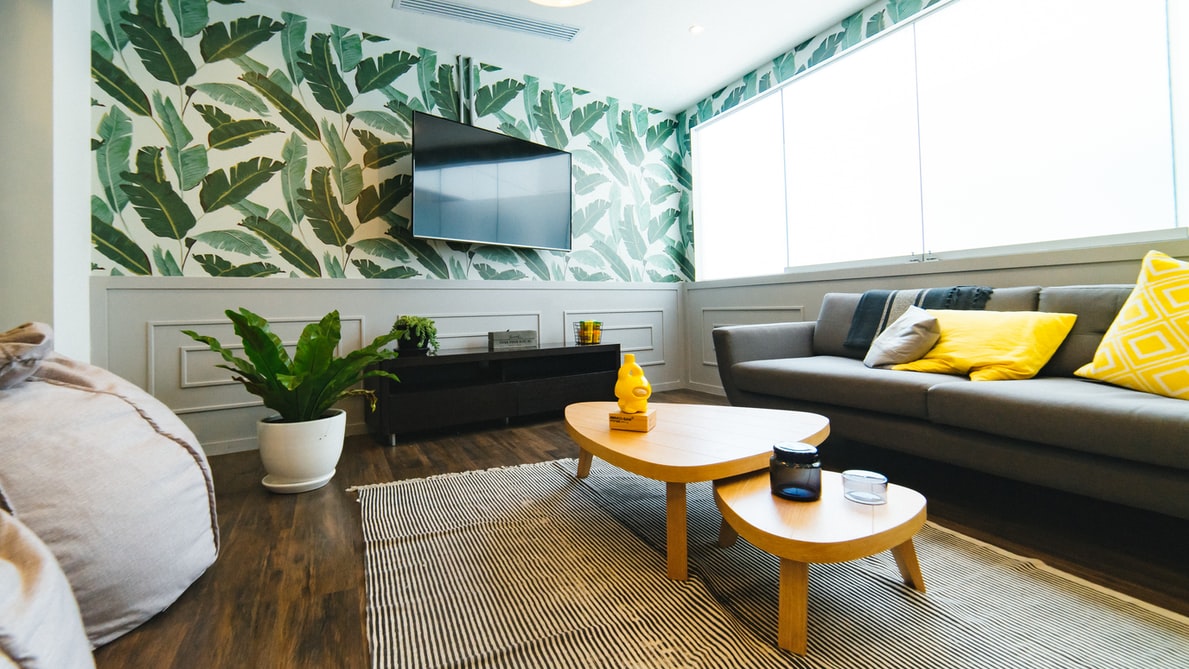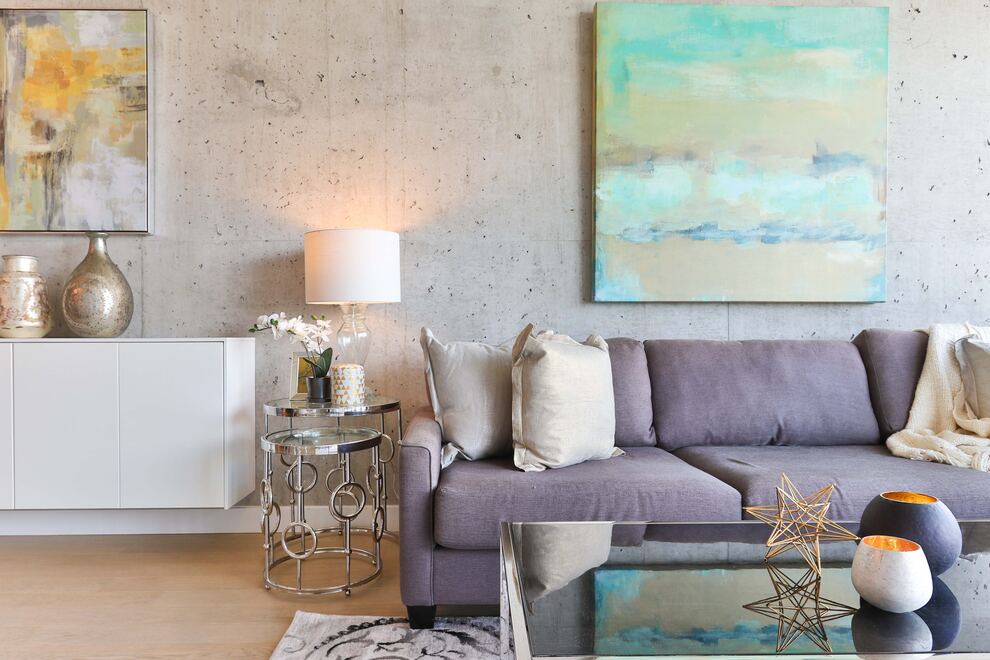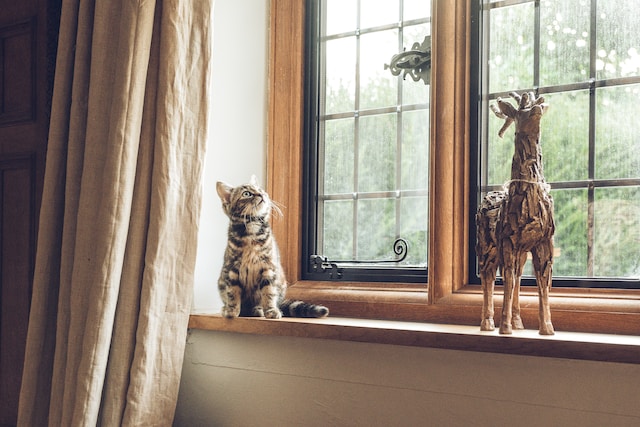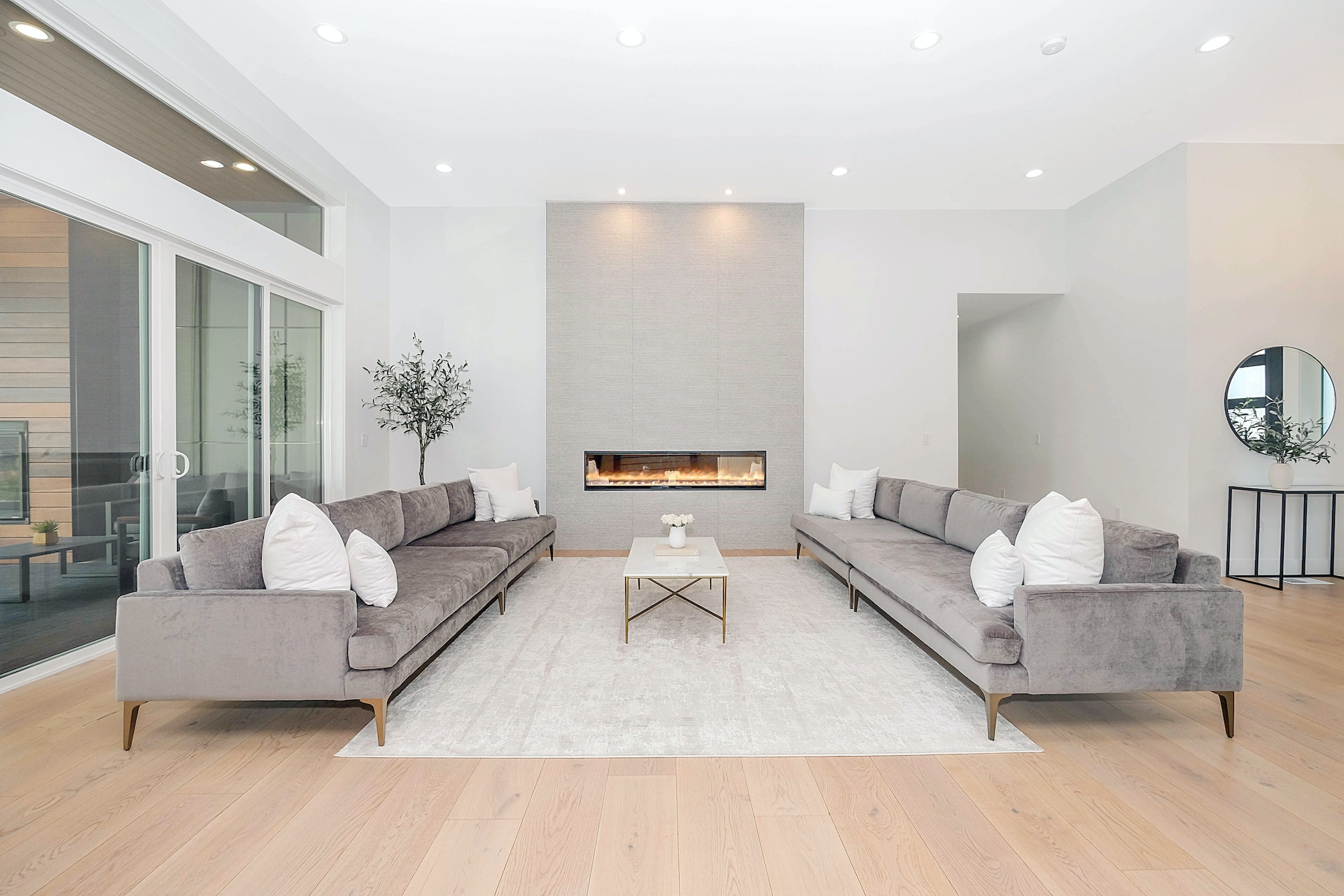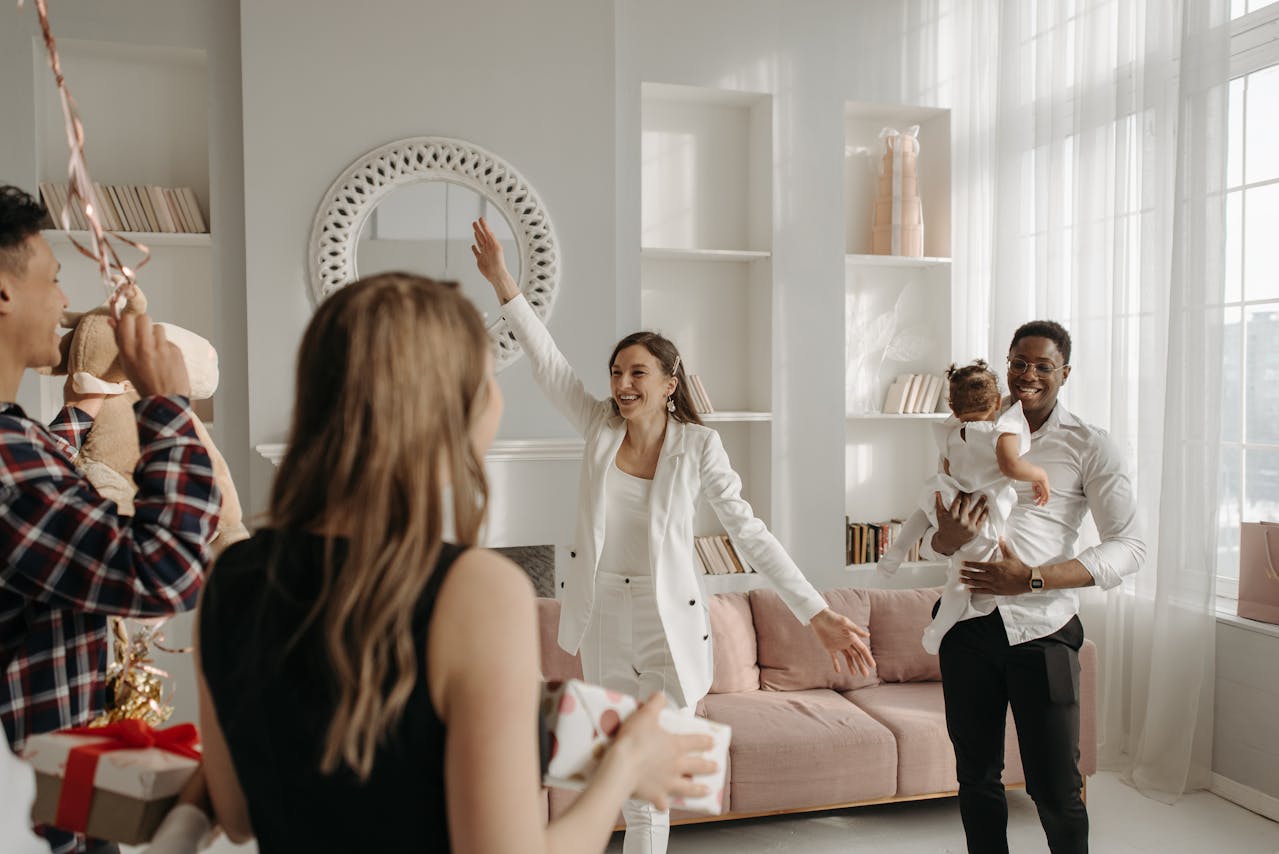If you’re ready to make a change to your home interior, updating the look of your walls and incorporating new materials like fabrics, vinyl, and stencils can make a powerful impact. Since the time of ancient Egypt, people have used a variety of materials and techniques to beautify their homes, temples, and other spaces. It’s a way to personalize a space with your own taste, and preferences, make it your own.
The Romans and Greeks decorated the walls of their temples and homes with hand-carved drawings,walls intricately sculpted reliefs, and mosaics to add texture and color to their surroundings. You can use these same principles in your own home today with a few simple hacks and tips. From creating your own stencils to learning the art of decoupage, read on for some awesome ways you can incorporate fabric, upholstery, and more into your home for a beautiful new space. You can also put into practice these hacks for a bathroom-remodeling project on a budget. It will expand the possibilities of home decor and pave the road to increase your creativity.
Even if you’re not a pro you can start with some of these hacks, many of them can be for home decor hacks for beginners.
Walls: DIY Décor
When it comes to making a major decor change, updating your walls is one of the most effective ways you can enhance your home. Whether you want to apply wallpaper or try your hand at stenciling, here are some ideas for designing your very own wall art and unique décor style.
Vinyl
Vinyl is a versatile material that’s easy to work with and apply. Consider adding vinyl decals to your walls, especially in areas like the bathroom or basement, where its water-resistant properties are best put to use.
How to use vinyl on walls. Peel-and-stick vinyl is easy to cut and to apply. This lightweight material can be cut to any size and shape using a utility knife. Clean the walls, and make sure they’re completely dry before applying the vinyl. Slowly press the vinyl down onto the wall, and use a soft, dry towel to push it gently against the wall to remove any air bubbles.
Types of vinyl. Most vinyl comes in sheets, so you can purchase as much or as little as you need. You may also find it in a plank-style format, but rolls or sheets are much easier to apply and the vinyl will stay on your walls much longer since there will be fewer seams and less separation between pieces.
Is vinyl budget-friendly? Vinyl is an affordable choice. You can find vinyl for around $2.00 per square foot for the lower-end styles, and around $3.75 per square foot on the high end. This makes vinyl a budget-friendly option for updating your walls.
Ideas for vinyl on walls. Look for a patterned vinyl, and apply it to the walls around your bathroom or kitchen sink as an easy alternative to a tile backsplash. You can also apply vinyl to the walls of a playroom or basement area for a fresh, affordable update.
Decals
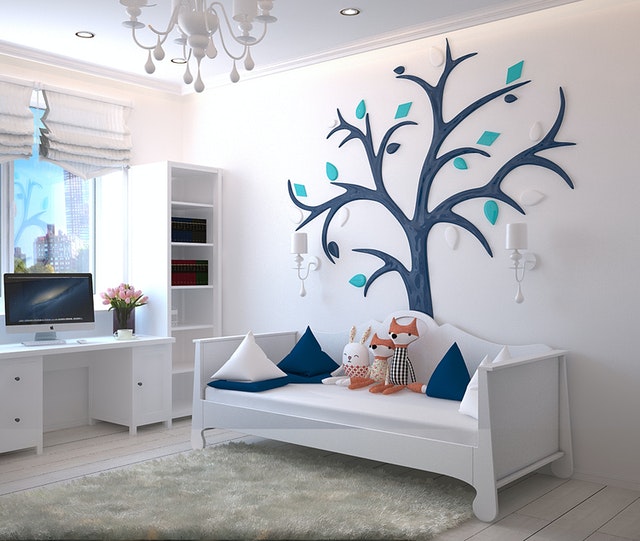
Wall decals are like giant stickers you can add to any space with a few easy steps. Decals are a great way to add visual interest, a fun pop of color, or a unique pattern to your walls.
How to apply a decal. Clean and dry the wall where you want to apply your decal. Measure the wall, and determine exactly where you want the decal to go. Slowly peel some of the backing from the decal, and gently press it down from the top. Continue peeling the back away as you keep pressing down until the entire decal has adhered to the wall.
Types of decals. You’ll find decals in several designs, including fun shapes, silhouettes, or entire murals that make a great replacement for wallpaper. Decals come in tons of themes including nature, pop culture, and patterns, just to name a few.
Are decals budget-friendly? Wall decals are fairly inexpensive, and you can find them virtually anywhere online. Smaller decals will cost less, while larger, full-wall size decals will cost more, but most range between around $10 to $50.
Ideas for decals on walls. Use a large decal to create a simple feature wall, add fun shapes and images to the kids’ rooms. Decals are great for any room where you want to create a specific theme without committing to a permanent change.
Wall Stencils
Stenciling is a fun, easy, and creative way to add color and character to a small or large wall area.
Ideas for stencils on walls. Create a beautiful repeating pattern with a stencil, and add it to your bathroom, living room, or bedroom. Stencils are ideal for almost any space, but they’re best in larger rooms since the pattern can be overwhelming and make rooms feel smaller if it’s too intricate or the stencil is large in size.
Type of paint to use. Use a latex-based paint when stenciling your walls so it’s resistant to stains and marks. Use light and dark colors for contrast so the stencils stand out. You can use eggshell, gloss, or high-gloss paint for your wall stencils. Consider the type of paint already on your walls, then choose a finish that will help make the pattern pop — if your walls are painted in an eggshell finish, try a glossy stencil, or if your walls are on the glossier side, try a flat finish for the stencil.
Popular types and styles of stencils. You can create a custom stencil, or shop for a style online. Some popular styles include geometric shapes, floral designs, and medallion patterns.
Are stencils budget-friendly? Stenciling is a very affordable way to add bold style to your walls. Since you’ll only need one stencil, all you have to purchase is the stencil itself, the paint, painter’s tape, a foam roller, and a paintbrush.
Mosaics

A mosaic design is a fantastic way to add color, texture, and unique style to your walls. It’s important to understand how to create a mosaic before you begin so that it turns out beautifully since mosaics are a more permanent choice of wall décor.
Different materials for mosaics. You can use broken plates, small pieces of tile, glass, or even seashells for your mosaic.
Mosaic glue types. Mosaics should be applied with glue to create a strong adhesion and make them stay in place. Use a high-quality mastic to keep your mosaic pieces in place. You can add grout between the lines if you choose, or leave it as-is to create visual space between each piece.
Designs and style ideas. Draw your idea on paper, and create a border that you can fill in with your mosaic pieces. Create a beautiful food or wine-themed mosaic design for your kitchen, or try a beautiful tree, bird, or flower design if you want to add a fun touch to a bedroom or living room.
Are mosaics budget-friendly? A custom mosaic is easy and affordable, depending on what material you use. High-end tile will cost you more than if you repurpose your mosaic using glass or broken pottery and dinnerware.
Wallpaper
Wallpaper is making a comeback in homes, particularly due to new, trendy designs, easier installation methods, and that it’s not a lifetime commitment when you want another change you can paint over it.
Wallpaper designs and types. You can find wallpaper in simple patterns like stripes or florals, or you may discover more unique options, like textured wallpaper or one with a bolder print, you can also get custom wallpaper. Peel-and-stick wallpaper is a popular new style that’s easier to apply than the paste-up kind. If you prefer something that won’t feel too permanent you can always opt for removable wallpaper, especially for children’s rooms, they grow fast and the wallpaper might need frequent changing according to their age and taste.
Best wallpaper for different rooms. A subtle pattern, or something in a light color, is ideal for bathrooms and bedrooms, while something bold is a fun option for the kitchen or living room. Always make sure the wallpaper is water- and stain-resistant or easy to clean when installing it in bathroom and kitchen areas.
Is wallpaper budget-friendly? The cost of wallpaper varies greatly, and it’s more expensive when it’s made by high-end designers or boutiques. Peel-and-stick wallpaper costs less to install, since you won’t need to pay for extras like glue and additional tools.
Ideas for how to use it on walls. Try a bold-patterned wallpaper on one wall of your living room to create a unique feature wall. Install a calming color and pattern in the bedroom, or a smaller pattern in smaller rooms, like a bathroom or sitting room. Keep in mind the frames you’ll be hanging on the wall. There should be harmony between the pattern of the wallpaper and your frames to achieve the right look.
Decoupage

Decoupage is a fun way to add color, design, and style to almost any surface, but it’s important to know how to apply it before you begin.
What is decoupage? The word decoupage comes from the French word “decouper,” meaning cutting something out from something else. This classic technique involves applying cut-out patterns or images to a variety of surfaces, then covering them with a protective clear material to hold them in place.
Benefits. Applying decoupage can make old items new again, and it’s a great way to add fun components to almost anything. You can apply decoupage to jewelry boxes, furniture, or even your walls.
How to decoupage. Start by finding images, pieces of fabric, or paper that you like, then cut it out to your desired shape and size. Thoroughly clean the surface that you want to apply it to. Place your images where you want them to go, and using decoupage glue (find it at your local craft store), gently adhere them to the surface. Allow each element to try, then finish it by applying a final clear topcoat and painting or filling in the gaps with color.
Designs and styles. You can decoupage in any style you like. Some ideas include using pieces of vintage wallpaper, images from old books, or cutting out pieces of scrapbook paper that you can add to home décor items like frames or furniture pieces, like an old table or wardrobe.
Care. Keep your decoupaged items clean by wiping them with a clean, dry cloth to remove dust or debris. If they need deeper cleaning, use a barely-damp cloth, and gently spot-clean stains. Don’t use harsh cleaners, since they can damage the clear coat over your decoupage and cause discoloration.
Fabrics: Curtains, Carpets, and Upholstery
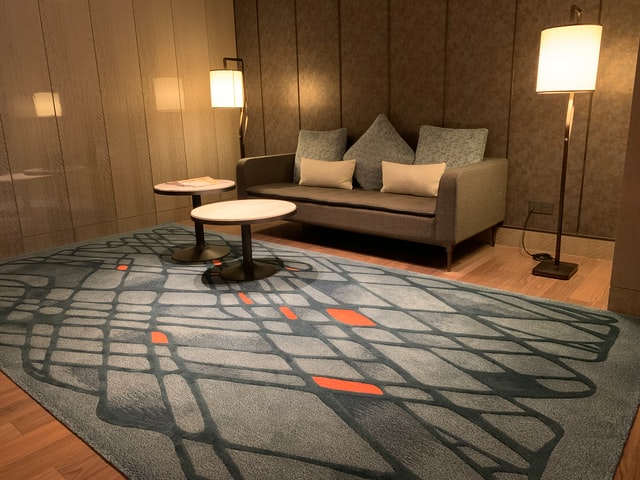
Elevate your home even more by trying some new materials and techniques that will add spice to your curtains, carpets, and upholstery. These hacks will inspire you to try your hand at being creative to design a beautiful new look anywhere in the home.
Fabric Stencils
Give fabrics and upholstery new life by applying a fun stencil using fabric paint and some simple techniques.
Types of stencils. You can use any design or type of stencil you, like but keep it simple and small when stenciling fabric or furniture upholstery. If you want to stencil your carpets, go bolder by choosing bigger stencils or more intricate patterns. Natural fibers like cotton, silk, or linen are the best fabrics for stenciling.
Best type of paint. Use fabric paint when stenciling fabrics, since it’s formulated to stay soft and move or bend with the fabric naturally. Avoid acrylic paint, since it will leave a hard, stiff finish behind.
Design styles and options. Use fun repeating, patterns like polka dots or small medallions on items like curtains and upholstery. For your carpets, consider a bolder design like large, repeating flowers, a modern geometric design, or something more detailed.
Care. Once the paint is dry, you can care for your stenciled fabric by following the normal care instructions for your particular type of fabric. However, when vacuuming a stenciled carpet, be sure you vacuum gently — don’t use the beater bar, and don’t scrape or rub the hose too hard against the carpet, since it could cause the paint to crack or peel off.
Paint for Fabric and Upholstery
Painting curtains, carpets, and upholstery is a fun way to add a personal touch to the fabrics in your home.
Best types of paint: Just like stenciling fabric, you’ll want to use special fabric paint when applying paint to curtains, upholstery, or carpeting. Never use acrylic or oil-based paints, since they will not adhere correctly or may harden once dried, causing the paint to crack and peel.
Designs and styles. Have fun painting your curtains or upholstery in any way you choose — dots, stripes, flowers, or abstract shapes. You can try a free-hand design, use a stencil to guide you, or simply use a paintbrush to create a fun repeating pattern.
Ideas. Upcycle an old chair or sofa by painting it a whole new color. Paint designs on your throw pillows or dining room chairs upholstery. Search the web to find inspiration for changing the color or look of the fabrics in your home.
Care. Apply a coat of clear wax to painted furniture to protect it. Otherwise, you can care for painted fabrics by washing them on the gentle cycle and allowing them to air-dry.
Heat Transfer Vinyl (HTV)
You can use heat transfer vinyl to create custom images, patterns, and looks on fabric items for a unique touch in any room.
Types of HTV: This material comes in several styles that relate to the finish or texture, such as flocked, glitter, glossy, pearlescent, or standard if you just want to add a classic look.
Where can HTV be applied? It’s best to apply HTV to cotton fabric, polyester, or fabric with a blend of polyester and cotton.
Designs and styles. You can design a custom HTV to add to fabric, or look for pre-made designs and styles online. You can also purchase the HTV in rolls and draw your own design – just cut it out and apply it once you’re finished.
How to apply HTV. Once the design is cut out and in place, gently press down on it using an iron on the cotton setting. Move the iron back and forth, pressing down until the HTV adheres to the fabric.
Care. Let your HTV cure for at least 24 hours before washing. You can care for fabrics with HTV by washing them in cold water on the gentle cycle and air drying them or using your dryer on the lowest heat setting.
Carpet Stickers for Home
Carpet stickers are adhesive stickers made for low-pile carpets that can add unique elements to your floors.
Types of stickers. Most carpet stickers are made of vinyl and can easily be applied to most low-pile carpets. You can find them as large logos, unique images for your living room, or you can create a custom sticker with your own wording or designs.
How to apply: Make sure the carpet is clean and dry, then gently peel the back of the sticker off. Slowly press the sticker down, and use a floor squeegee to remove any bubbles and ensure strong adhesion.
Durability. Carpet stickers should be applied to low-nap carpeting with little to no texture. Place them in an area with low foot traffic and little to no direct sun exposure.
Styles and designs. You can find carpet stickers in many designs, or you can have them custom-made to suit your needs. Add one to an entryway in your home for a fun way to welcome guests and friends, or apply big circles or other shapes to the carpet in the playroom for the kids to hop around on to avoid hot lava.
From applying wallpaper and mosaic tile to your walls to painting upholstery, it’s easy to update your home with these hacks. Try a few test runs on smaller surfaces to determine which method you like best. You could try something simple like one color and texture for the living room, or go extra with a two colour combination for bedroom walls. With some practice and inspiration, you can elevate your home and make it truly unique by updating the walls, carpet, curtains, and upholstery.
